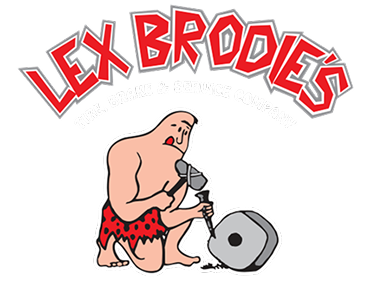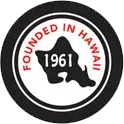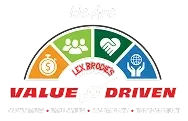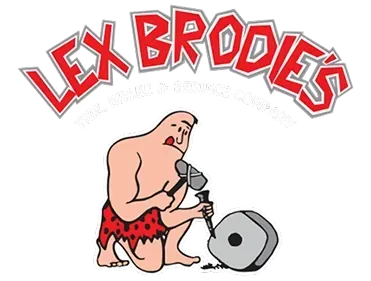
Preventive & Essential Care For Aging Vehicles
In our 60+ years of servicing Oahu Vehicles, we have found:
1 Car Year = 5 Human Years
5 Car Years = 25 Human Years
10 Car Years = 50 Human Years
20 Car Years = 100 Human Years!!
WHAT IS THE MAINTENANCE SCHEDULE AND SPECIAL CARE & CONCERNS OF VEHICLE A OUTSIDE IT'S MANUFACTURER WARRANTY PERIOD (FOR THAT VEHICLE)?
New vehicles under warranty have a maintenance schedule set by the manufacturer. Most car owners follow this schedule to ensure the warranty isn’t voided and to make sure their car runs smooth. But what if you own a vehicle that is beyond a manufacturer’s warranty and you want to ensure it continues to run smoothly? As vehicles age, there are certain maintenance milestones that need to be addressed to help avoid expensive repairs or failure. Vehicles that are well past their warranties (a typical powertrain warranty is 5 years or 60,000 miles) run the risk of major mechanical failure if proper care isn’t given. The Golden Gears Guide from Lex Brodie’s walks you through all the maintenance milestones of older vehicles, shows you what to look for, how to avoid the surprises of an aging vehicle, and offers recommendations on service or repairs.
6-9 YEAR OLD VEHICLE CHECKLIST
6+ YEAR OLD TIRES
NOTICEABLE CRACKS ON THE
TREADS OR THE SIDES
Aging tires could pose serious safety and performance issues with cracks beginning to show in as soon as six years. Noticeable cracks in your tires’ sidewalls or treads can a sign of aging and should be looked at seriously.
THERE ARE A NUMBER OF FACTORS THAT CONTRIBUTE TO TIRES CRACKING:
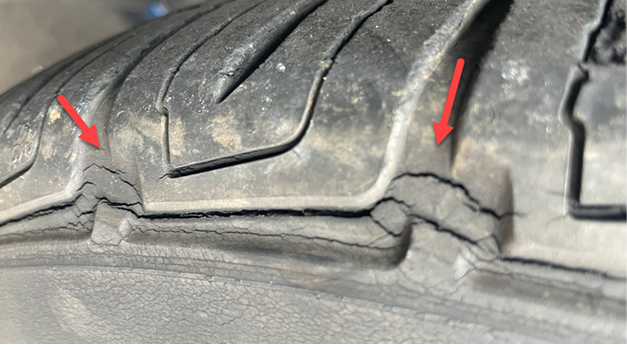
SUNLIGHT & HEAT
Hawaii driving is beautiful but there is a price to pay. UV rays wear down your tires over time, especially if your car is parked outside. Along with excessive heat, these factors play a role in shortening your tire’s longevity.
IMPROPER INFLATION
No, we’re not talking about the economy, we are talking about over or under inflating a tire. Incorrect tire pressure puts extra stress on a tire that can lead to cracks over time.
DRIVING CONDITIONS
Unfortunately, Oahu road conditions aren’t always the best. Potholes can lurk around every corner and are sometimes hard to avoid. Hitting potholes, curbs or other road obstacles contribute to tire cracking or damage.
AGE OF YOUR TIRES
Not all tires are created equal. Budget or less-then premium tires often wear down faster. Modern tires have anti-aging agents in them but even with proper care, tires age naturally.
RECOMMENDATIONS
If you notice cracks on your tires bring your vehicle to any Lex Brodie’s Oahu location for a free tire inspection. Our Team Members will be happy to check all four tires and give you a detailed assessment of the health of your tires along with any recommendations for unsafe tires.
TIRE TREAD DEPTH
A tire’s tread depth is the remaining usable rubber left on the tread side surface. Low tread depth indicates tires are worn and may need to be replaced. The State of Hawaii’s (and most of the nation) legal minimum tread depth is 2/32 of
THERE ARE A NUMBER OF SAFETY FACTORS THAT ARE IMPACTED BY LOW TREAD DEPTH:
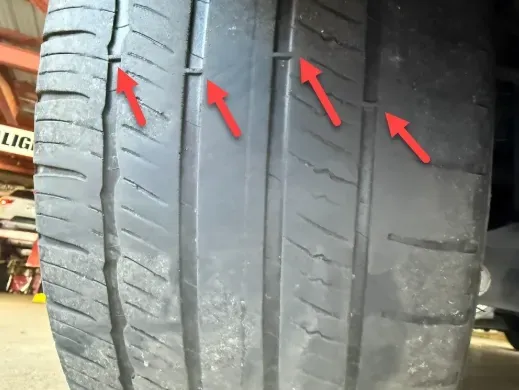
PERFORMANCE
A tire’s ability, as they were designed, to maintain grip on the road diminishes as the tire tread wears.
HYDROPLANING
Tires with low tread depth decrease in their ability to channel water away from the contact patch which can cause a vehicle to lose traction in wet weather.
RECOMMENDATIONS
Lex Brodie’s recommends you have your tire tread depth checked every time you air up your tires. Tires have Wear Bars that are visible in multiple areas around a tires, simply view these tread bars and take not if the tires are worn close to the wear bars. You can also use a penny to check your tread depth! Ask us how! We are also happy to check your tire’s tread depth at any of our Oahu locations. Lex Brodie’s recommends replacing the tires once your tread depth has worn below to 3/32nd or lower.
UNUSUAL OR UNEVEN TIRE TREAD WEAR
Your tires tell a story and keep record of your driving and maintenance habits (darn tires, how could you?!).
UNUSUAL OR UNEVEN TIRE WEAR COULD INDICATE SEVERAL ISSUES:
TIRE ROTATION AND UNEVEN TIRE WEAR
Rotating your tires on a regular basis helps to ensure even wear and helps to maintain your tire’s longevity.
SUSPENSION ISSUES
Worn suspension issues, like struts or shocks, can lead to a bouncy ride and rattling noises. This impacts a vehicle’s safety as well as the health of your tires (not to mention the health of your teeth!).
ALIGNMENT ISSUES
Misaligned wheels can cause squealing on turns and frequently contributes to premature tire wear and unsafe driving conditions.
FOREIGN OBJECT OR DEBRIS
A thumping noise could indicate one or more of your tires has picked up a foreign object or debris is wedged in your tread.
RECOMMENDATIONS
Lex Brodie’s recommends to rotate your tires (when possible) every 6,000 to 7,000 miles and recommends checking (and correcting if needed) your wheel alignment once a year (or after you hit a large pothole or experience your vehicle not driving straight down the road and / or your steering wheels is crooked. It’s also recommended to drive from time to time will all device off so you can listen to your vehicle. Any new squeals, grinding or clunky sounds are symptoms that should not be ignored. Along with any new warning lights, it best to schedule a check as soon as possible when any new noises are detected.
6-9 YEAR OLD ENGINE/POWERTRAIN
It’s recommended to follow your engine maintenance schedule throughout the life of your vehicle.
DASH WARNING LIGHTS
Any time warning lights come on, it is important not to ignore them.
A Yellow Warning Light indicates caution, something should be looked at as soon as possible.
A Red Warning Light means “STOP DRIVING!”. Continuing to drive with a Red Warning Light could lead to severe engine (or other vital systems) damage or failure and leave you in an unsafe situation.
RECOMMENDATIONS
If you don’t know what a Red or Yellow Warning Light means, bring you vehicle to the nearest Oahu Lex Brodie’s and we will take a look for you. It’s also not a bad idea to install codereaders, such as FIXD that give trouble codes with brief explanations. Please note, these codes do not replace an experience technician diagnosing what caused the code and what other underlying hidden issues there may exist.
TRANSMISSION
It is advisable to follow the manufacturers recommended oil change maintenance schedule.
Please Note: Lex Brodie’s does not service or work on transmissions.
RECOMMENDATIONS
If you don’t know what a Red or Yellow Warning Light means, bring you vehicle to the nearest Oahu Lex Brodie’s and we will take a look for you. It’s also not a bad idea to install codereaders, such as FIXD that give trouble codes with brief explanations. Please note, these codes do not replace an experience technician diagnosing what caused the code and what other underlying hidden issues there may exist.
10-19 YEAR OLD VEHICLE CHECKLIST
10+ YEAR OLD TIRES
The tire in this photo was 9 1/2 years old when removed from service. (Age of the tire can be seen from the last 4 numbers of the Tires's DOT number, for this tire they are "3116". The "31" stands for the week of the year and the "16" stands for the year. This tire was removed in 2025 when it was 9 1/2 years old.
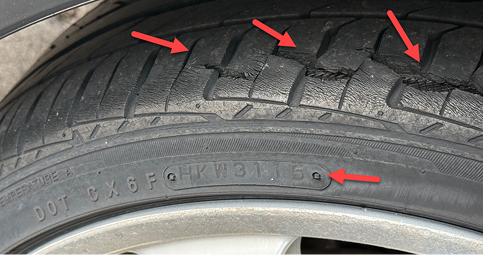
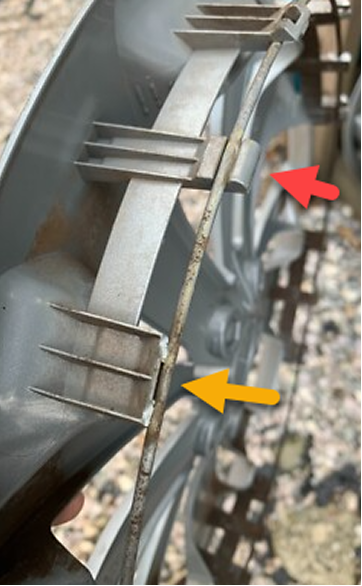
HUB CAPS
Older hub caps become brittle and the retaining tabs or clips holding them in place can break. This can lead to your hubcaps falling off when driving (not good!). Hawaii weather (and rough driving conditions — thank you potholes!) really takes a toll on a vehicle’s plastic and rubber components. Over the years, we have seen the average hub cap lifespan be about 8-12 years. Keep in mind, when having your tires or vehicle serviced, older hub caps may already be brittle and can crack when removed and/or installed properly.
RECOMMENDATIONS
Lex Brodie’s recommends to replace tires once the show signs of cracking and are over 8 years old, and recommend to replace once tires reach 10 years old. Once tires reach 10 years old, it’s Lex Brodie’s policy to NOT SERVICE tires 10+ years old. For hub caps, once hub caps reach 10 years old and the first one fails and falls off, Lex Brodie’s recommends to replace the hubcaps or simply just leave them off, but at the minimum be aware that they others may fail in the near future as well. Once a second Hub Cap fails, we’ll recommend to leave the others off (or to replace them).
10+ YEAR OLD ENGINE/POWERTRAIN
Even at higher milage, it’s recommended to follow the manufacturers recommended oil change maintenance schedule.
DASH WARNING LIGHTS
* See 6-9 Years Tire Section, BUT pay even more attention on your aging vehicle!
TIMING BELT
Most manufacturers recommend a vehicles timing belt be replaced every 90-100k miles or 10 years, whichever comes first. If you ignore this recommendation it could lead to expensive repairs or engine failure. Timing belts are made of rubber and degrade over time due to heat, wear and the natural lifespan of rubber. A broken timing belt can cause pistons and valves to collide, resulting in more expensive repairs. It is crucial to replace the timing belt when needed to avoid an engine disaster.
RECOMMENDATIONS
It’s recommended to follow that same mileage and age interval as to go onto 200k or even 300k miles! When replacing a timing belt, it is recommended to also replace the water pump save money and be safe.
TRANSMISSION
It is advisable to follow the manufacturers recommended oil change maintenance schedule.
Please Note: Lex Brodie’s does not service or work on transmissions.
10+ YEARS OLD ENGINE COOLING SYSTEM
The radiator, hoses, thermostat, and water pump make up your cooling system. As a vehicle ages, the weakest component will fail and leak first. Once that component is repaired, the next weakest component (that then tends to need to work harder), will leak next. And so on, and so on… Once an Engine Cooling System reaches 10-12 years old or 120,000+ miles, it’s time for a cool change (ha)!
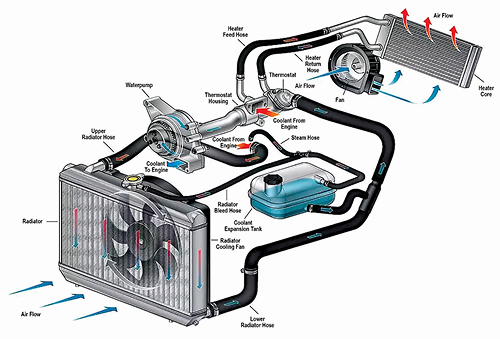
RECOMMENDATIONS
Lex Brodie’s recommends to check your engine cooling fluids monthly (ONLY WHEN THE ENGINE IS COOL!) and when it’s time to change engine cooling components: the radiator, hoses and thermostat to be replaced together (if they are still the original components) to ensure they are working as a tight, healthy team. This will also potentially save your lots of money, because once one engine cooling system component fails because of age, the rest will follow.
10+ YEARS OLD A/C UNIT
The A/C Unit is much like the Engine Cooling System (see above), the weakest component goes first, then the next, then the next… There are 4 major components that can go bad (with each being a costly repair) in an A/C System: Condenser, Evaporator, Compressor and A/C Cooling fan. As your vehicle ages, all 4 of these components will fail. The evaporator is the costliest repair since the dashboard needs to be removed (see Panels & Dashboards).
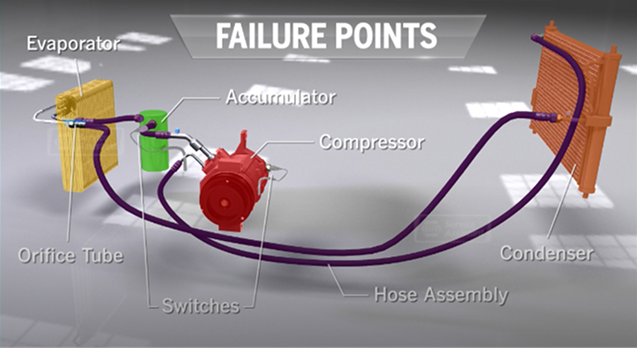
RECOMMENDATIONS
Lex Brodie’s recommends to replace A/C components as they fail, while being aware of the other additional A/C items that may fail in the near future and the budget that may be needed to replace those items at a future date.
GASKETS & FLUID LEAKS
As with the Engine Cooling System and A/C unit, the weakest component will fail first, then the next weakest component will fail after the previous weakest component was replaced. This can continue until all the seals have been replaced. Some shops will recommend replacing all seals and components at one time.
RECOMMENDATIONS
Lex Brodie’s replaces the components seals (or the components themselves when necessary) for the components that Lex Brodie’s can verify is leaking. Please note: there are some seals that Lex Brodie’s does not replace, like the Rear Main Seal which requires the transmission removed.
10+ YEARS OLD PANELS & DASHBOARDS
Original panels, dashboards and items with rubber, plastic, cloth or leather will become brittle when a vehicle reaches 10+ years and prone to cracking or failure
RECOMMENDATIONS
Lex Brodie’s recommends for customers to recognize that these components start to get brittle as they age and that removing and reinstalling older components may lead to cracks or broken components (many times which is simply a cosmetic issue while other times it may need to be replaced so it can perform it’s designed function). A waiver may be requested to confirm the vehicle operator accepts this risk and waives holding Lex Brodie’s responsible for unpredictable older component issues while removing and / or installing older components.
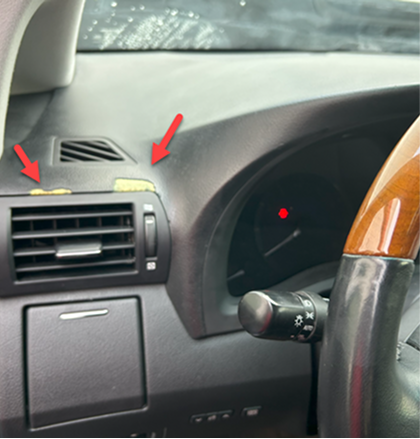
**PLEASE NOTE**
When aging components are worked on properly, cracking, tearing or peeling can occur. The photo of a the dash above was worked on with proper tools and procedures by a very experience Master ASE Technician, and the 12+ year old dashboard materiel tore. Please note that this type of damage can be unavoidable for older vehicle repairs.
20+ YEAR OLD VEHICLE CHECKLIST:
At 20+ years, most of the original components that are plastic, rubber and cloth components have outlived the lifespan they were designed for. Even a vehicle with low miles, these items have aged and can crack or break if moved, removed or reinstalled. A waiver will likely be requested to confirm the vehicle operator accepts this risk and waives holding Lex Brodie’s responsible for unpredictable older component issues while removing and / or installing older components.


